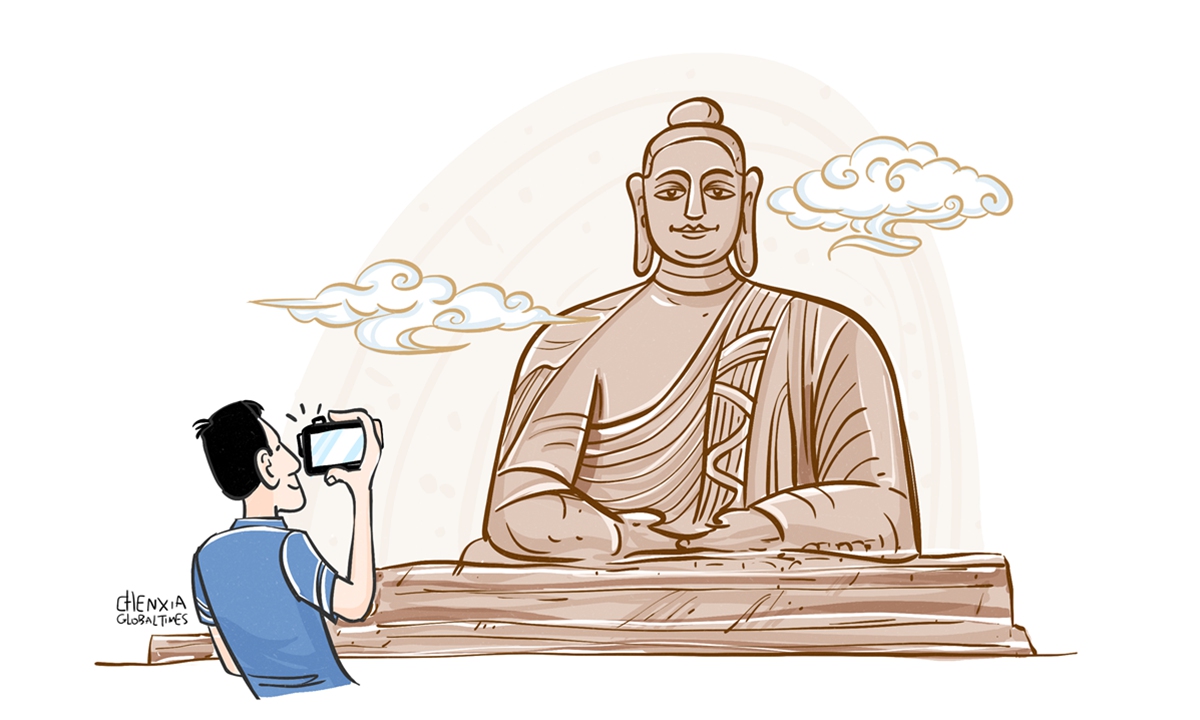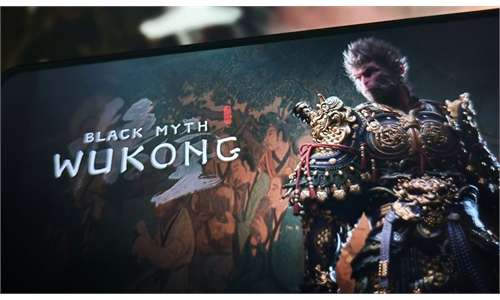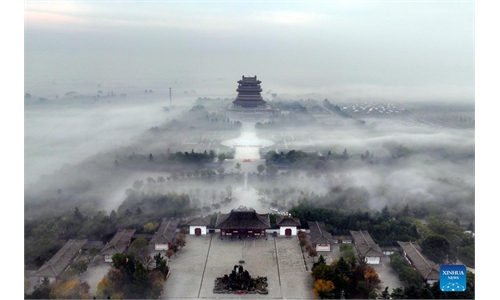ARTS / CULTURE & LEISURE
Shanxi tourism rides ‘Wukong’ wave

Illustration: Chen Xia/GT
China's first triple-A video game Black Myth: Wukong has not only made waves in the global gaming industry, but has also brought the allure of Chinese culture to the world stage. Such a cross-industry breakthrough, combining gaming and cultural tourism, showcases the profound richness of traditional Chinese culture and paves the way for a new cultural tourism trend in the digital age.A released list of filming locations shows that Black Myth: Wukong selected 36 sites across China as in-game backdrops. Notably, North China's Shanxi Province stands out with 27 of its locations featured in the game.
The cultural impact of the game caused local tourism searches on Chinese tourism site Ctrip to spike by three times on launch day, August 20, compared to the previous day.
Zhang Qing, director of promotion and publicity at the Culture and Tourism Department of Shanxi Province, told the Global Times that they established contact with the game's creators years ago during the development stage and held numerous exchanges.
"The game uses a format beloved by modern youth to pass on historical culture, tell Chinese stories and truly bring cultural heritage to life. This collaboration not only showcases Shanxi's rich cultural heritage, but also presents a golden opportunity to promote Shanxi's tourism," Zhang noted.
Zhang emphasized the importance of respecting history and striving for the utmost expression of Chinese aesthetics in presenting Shanxi's cultural heritage to the younger generation through the game. For Generation Zers, this form of cultural communication has genuinely resonated with their preferred lifestyle and interests.
Starting in September, Shanxi will launch official tour routes for visitors eager to explore the game's scenery, and will host a series of related activities, including the release of a "travel pass" and the opening of a Black Myth: Wukong "offline quest."
Multiple national heritage sites will be opened to the public, showcasing Shanxi's rich cultural legacy.
By integrating these cultural assets with the game, Shanxi can both enhance the visibility of its heritage and raise public awareness of cultural preservation.
Provinces and cities like Beijing, East China's Zhejiang Province, and Southwest China's Chongqing have responded by releasing promotional videos, launching themed routes, and inviting influencers to visit to boost their local tourism industries.
These transitions from virtual to real-world cultural communication highlight the powerful influence of digital culture on local tourism and provide new approaches for the preservation as well as use of traditional cultural heritage.
Yang Jie, a tourism planner at the Shanxi Cultural Tourism Digital Experience Museum, told the Global Times that transforming the iconic locations featured in popular IPs like Black Myth: Wukong into tourist attractions, and developing game-themed cultural routes, exhibitions, and interactive experiences, are the right directions for modern cultural tourism development.
She said she is confident that this crossover can leverage the "long-tail effect" of the game, driving the long-term development of cultural tourism in Shanxi and across China.
Yang further noted that integrating various forms of media, such as films and documentaries, can enhance the connection between popular IPs and local culture. By deeply merging the classic game scenes from Black Myth: Wukong with real-world landscapes, a "game + culture + tourism" composite product can be created.
This not only boosts the appeal of cultural heritage, but also allows visitors to experience a rich cultural atmosphere while enjoying entertainment, thus continuously attracting tourists, and promoting sustainable local tourism development.
The trend of game IPs promoting cultural tourism has already been seen abroad. For example, Grand Theft Auto V, the 2013 Game Awards' Game of the Year, features landmarks from Los Angeles.
Additionally, a netizen shared online that her husband, who had never been to Paris, became familiar with its streets and architecture through the video game series Assassin's Creed, which has a game set in Paris.
By developing tourism strategies based on games, Shanxi's rich cultural heritage is being revitalized, attracting attention and exploration from both domestic and international tourists.
This blend of virtual and real-world cultural promotion can not only infuse traditional culture with new vitality, but also make China's historical legacies shine even brighter.
The author is a reporter with the Global Times. life@globaltimes.com.cn



